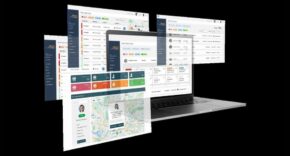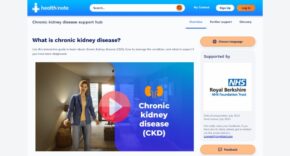
To the untrained eye, the number of mouse clicks it takes for clinicians to access an electronic patient record (EPR) might not seem like an important factor. However, it can have a huge impact on the speed and effectiveness of care delivery. And it’s not unusual for clinicians to be forced to access data from multiple health IT applications in order to understand a patient’s history. Optimising what might, to some, seem a trivial action is crucial for saving time, maximising efficiency, and providing the best experience for patients. Here I will explore how every extra click affects the successful operation of your hospital, and how minimising EPR clicks improves workflow and satisfaction for both clinicians and patients.
How many is too many?
Clicking a mouse or pressing a key rarely takes longer than a second. Today, most people click or tap their devices thousands of times a day without thinking anything of it. But, in a busy healthcare environment, these actions add up.
Unnecessary clicks multiply over the course of a shift. A clinician seeing 20 patients in a day, with 2 minutes wasted on clicking per patient, adds up to 40 minutes of wasted time. This lost time has a significant opportunity cost, especially when you start scaling those lost minutes by the number of clinicians on staff over the course of a year. Imagine how many extra patients could have been seen. And having fewer appointments available or running late on a schedule also harms the patient experience and outcome.
A clinician’s raison d’être is to consult, diagnose and treat patients. The increased digitisation of clinical workflow through the adoption of healthcare applications, such as EPRs, was designed to drive efficiency in care delivery. However, though these systems offer significant benefits, there have been unexpected consequences to their introduction.
One issue that seems to arise time after time is the distraction that clinicians experience when using software applications in a direct care setting. Clinical staff have consistently reported the challenges of switching focus and contexts back and forth between consulting with a patient and interacting with a computer system. Further, the more complicated the interface, the more distracted the clinician becomes and, consequently, the more compromised the engagement with the patient.
The prevalence of clinical and administrative software in hospitals has led to clinical staff spending more time navigating these applications and less time communicating with patients. As well as the negative consequences for both the clinician and the patient ( outlined above); clinicians, who are now tasked with learning and operating complex software applications, face an increasing risk of burnout. “EPR burnout” can be especially prevalent in clinicians who might be less technologically savvy.
How to create a workflow that puts clinicians first
As we’ve established, reducing EPR clicks will help clinicians speed up their care delivery. In many hospitals, this stems from the need for clinicians to access multiple applications to access a patient’s full history. Interestingly, outside of the primary EPR, many of these systems are considered ‘legacy’. This is largely as technology changes over time and older systems are regularly replaced with newer ones. But, these ‘legacy’ applications persist as limited or no data from the older system is transferred across to the new one (and there are good reasons for this, such as data quality, compliance, and liability). The result is that clinicians are forced to ‘go searching’ for all of the patient data they need when consulting, diagnosing and treating a patient. This is clearly an inefficient clinical workflow.
Another identified issue is the lack of communication between the software designers and developers that create the clinical software and the medical professionals that use it. In essence, a developer is paid to create a system that serves a purpose, but they can lack background and context in the required general or specialist medicine and their respective clinical workflows.
In an ideal scenario, medical professionals should always be involved in the software development process, bringing these two fields together in a way that results in a more functional, efficient system. Building recognised clinical processes into the application can reduce over-engineered software, helping the physician to avoid unnecessary clicks through intuitive software design and resulting in a higher level of user acceptance and satisfaction.
By interacting with the wider community throughout the process, you can establish common user challenges and frustrations. These can then be fed back to the product and engineering teams of the software supplier. They, in turn, consider ways to proactively design the software to alleviate or mitigate against these issues. But simplicity is key – the most common rudimentary tasks shouldn’t take dozens of clicks to complete; they should be quick and easy to accomplish.
Less Clicks, More Care
While these small clicks may seem trivial, applications designed with clinicians in mind recognise that wasted time amounts to less time spent with patients, and greater frustration for clinicians. Centralise your data by reducing EPR clicks and enable the best delivery of care to patients.
By Tim Kaschinske, HealthStore® Senior Product Manager at BridgeHead Software












